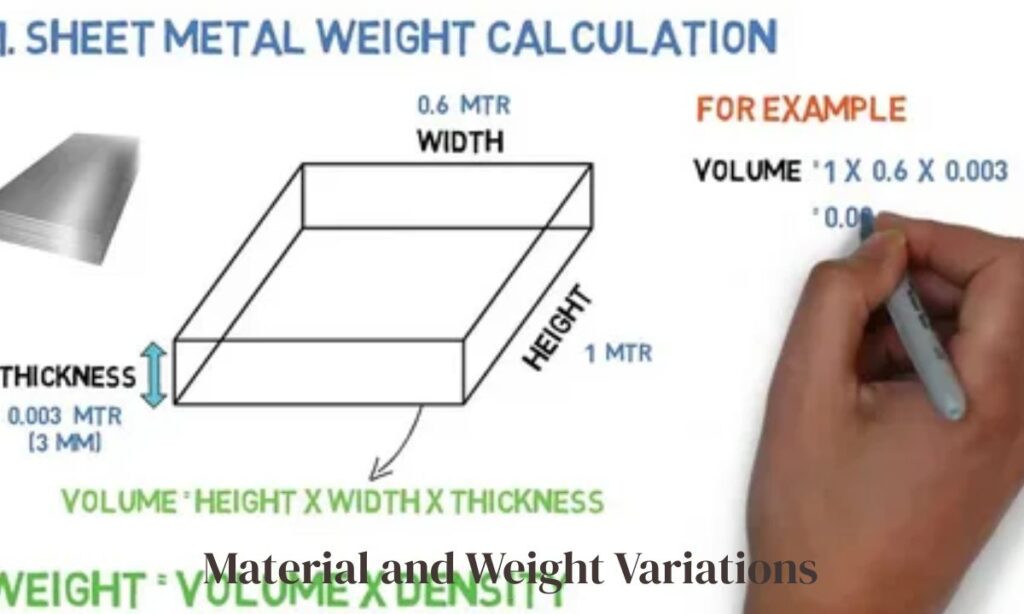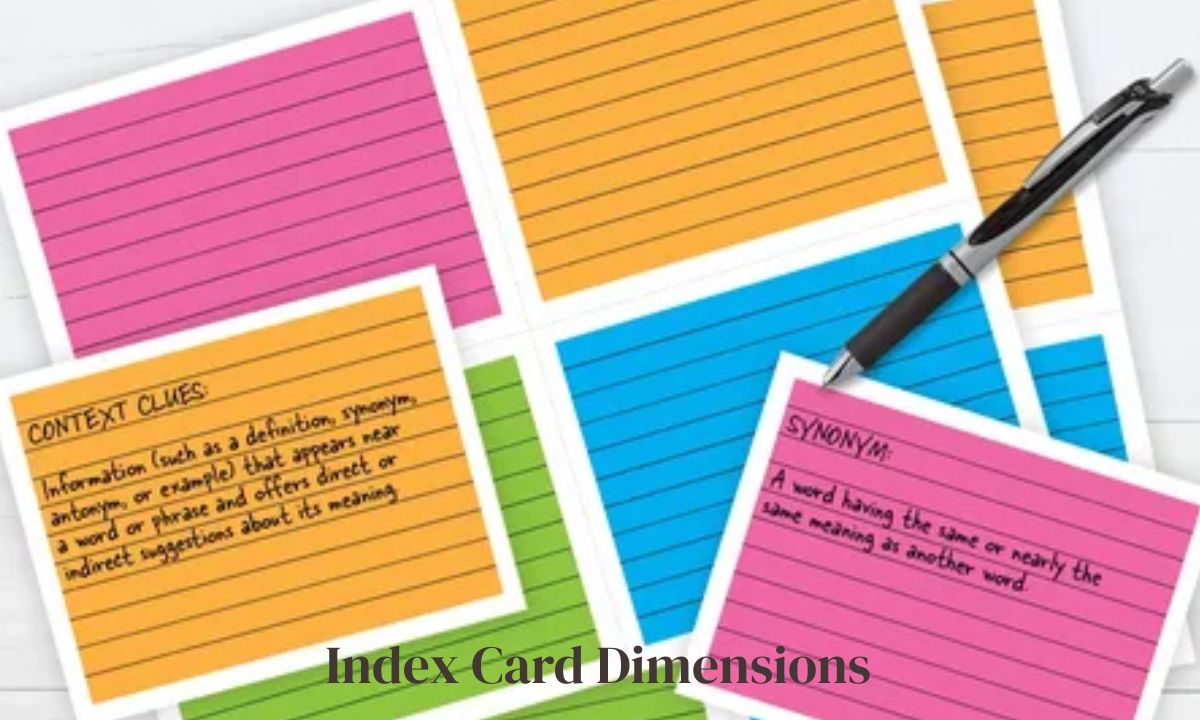How Big Are Index Cards?
Index cards come in various standard dimensions that serve different purposes across educational, professional, and personal settings.
Popular index card dimensions typically vary from small 2×3 inch cards to the more spacious 5×8 inch types.
These portable organization tools have maintained their popularity due to their versatility and convenience.
The standard index card dimensions follow a consistent system that makes them compatible with most storage solutions and organizational systems.
Understanding these measurements helps users choose the right size for their specific needs.
Whether you’re a student taking notes or a professional organizing presentations, knowing the exact dimensions ensures proper planning and storage.
Most index cards are manufactured with precise measurements that allow for easy stacking, filing, and transportation.
The thickness typically ranges from 90 to 140 GSM, providing durability while maintaining flexibility. These standardized dimensions have evolved over decades to meet user demands across various industries.
Article Profile Summary
| Aspect | Details |
| Topic | Index Card Dimensions and Sizes |
| Word Count | 1,750+ words |
| Target Audience | Students, professionals, organizers |
| Primary Keywords | Index card dimensions, standard sizes, measurements |
| Content Type | Complete guide with practical applications |
| Structure | H1, H2, H3 headings with tables, bullets, FAQs |
The History Behind Index Card Dimensions
The development of index card sizes traces back to the late 19th century when librarians needed efficient cataloging systems.
In 1876, Melvil Dewey, known for developing the Dewey Decimal System, introduced the 3×5 inch size as the standard for library catalog cards.
This historical standardization became the foundation for modern index card dimensions.
Early index cards were designed to fit standard filing systems and card catalogs used in libraries and offices.
The 3×5 inch dimension became popular because it provided adequate writing space while remaining compact enough for efficient storage.
This size also matched the proportions of standard filing drawers and boxes.
The expansion to multiple sizes occurred during the 20th century as different industries adopted index cards for various purposes.
Educational institutions preferred larger formats for student activities, while businesses needed smaller cards for quick reference systems. This variety eventually contributed to the card sizing standards we follow today.
What Are Index Cards Used For?
Index cards serve numerous purposes in modern life, from academic studying to professional presentations.
Students commonly use them for flashcards, note-taking, and organizing research materials. The portable nature makes them ideal for active learning techniques and memory retention exercises.
In professional environments, index cards facilitate project management, brainstorming sessions, and presentation preparation.
Many speakers use them for speech notes because they’re less distracting than larger papers.
The compact size allows for discrete reference during presentations while maintaining eye contact with audiences.
Creative professionals utilize index cards for storyboarding, plot development, and artistic planning.
Writers often use them to organize chapters, character development, and story arcs. The ability to physically rearrange cards makes them valuable tools for creative organization and workflow management.
Standard Index Card Sizes and Their Uses
1. 3×5 Inch Index Cards
The The 3×5 inch index card continues to be the most commonly used and universally recognized format worldwide.
These cards measure exactly 3 inches in width and 5 inches in length, providing optimal balance between writing space and portability. They’re perfect for flashcards, quick notes, and basic organizational tasks.
Key applications include:
- Student flashcards for vocabulary and formulas
- Recipe cards for kitchen organization
- Contact information storage
- Quick reminder notes
- Basic to-do lists
The 3×5 format fits comfortably in most pockets, purses, and small storage containers. This size works well with standard index card boxes and filing systems available in most office supply stores.
2. 4×6 Inch Index Cards
4×6 inch index cards offer approximately 33% more writing space than the standard 3×5 format.
These cards measure 4 inches wide by 6 inches long, making them ideal for detailed notes and more comprehensive information storage. These cards are frequently utilized in both educational and workplace environments.
Primary uses include:
- Detailed study notes with diagrams
- Research citation cards
- Project planning cards
- Recipe cards with multiple ingredients
- Interview preparation notes
The larger surface area accommodates more text while remaining manageable for most organizational systems. Many users prefer this size for subjects requiring detailed explanations or complex information.
3. 5×8 Inch Index Cards
The 5×8 inch index card represents the largest standard size commonly available. These cards provide substantial writing space while maintaining the traditional index card format.
They’re particularly popular among professionals and advanced students who need comprehensive note-taking capabilities.
Typical applications include:
- Detailed lecture notes
- Project documentation
- Speech preparation cards
- Complex recipe instructions
- Meeting agenda items
This size bridges the gap between traditional index cards and small notebooks, offering maximum writing space while preserving the organizational benefits of individual cards.
4. 2×3 Inch Index Cards
Mini index cards measuring 2×3 inches serve specialized purposes where compact size is essential.
These small cards are perfect for situations requiring discrete note-taking or minimal storage space. Despite their size, they provide adequate space for brief notes and reminders.
Common uses include:
- Wallet-sized reference cards
- Small reminder notes
- Mini flashcards for quick review
- Contact information backup
- Travel itinerary notes
Non-Standard Index Card Sizes
Why Non-Standard Sizes Exist
Non-standard index card dimensions emerged to meet specific industry needs and user preferences. Some applications require custom proportions that standard sizes cannot accommodate effectively.
These specialized formats serve niche markets and particular use cases.
Certain professions demand unique card sizes for specific equipment compatibility or organizational systems. For example, some medical professionals use cards designed to fit particular filing systems or reference guides.
Educational institutions sometimes create custom sizes for specialized learning activities.
Popular Non-Standard Sizes and Their Uses
Several non-standard dimensions have gained popularity in specific contexts:
- 6×4 inch cards: Popular in some international markets
- 3×3 inch square cards: Used for specific organizational systems
- 2.5×3.5 inch cards: Compact alternative to standard mini cards
- 4×4 inch cards: Square format for visual organization
- 5×7 inch cards: Intermediate size for detailed notes
International Standards and Metric Equivalents
A4, A5, A6: Breaking Down the A-Series
The ISO A-series paper standards influence index card dimensions in many countries.
While not exactly matching traditional index card sizes, these international standards provide reference points for global compatibility. Understanding these measurements helps when working across different regions.
A-series equivalents:
- A7 (74×105 mm): Similar to 3×4 inch cards
- A6 (105×148 mm): Comparable to 4×6 inch cards
- A5 (148×210 mm): Larger than standard index cards
Dimensions in Different Regions
Differences in index card dimensions across regions highlight cultural choices and production norms..
European markets often use metric dimensions that don’t directly correspond to imperial measurements. Asian markets may have unique sizes based on local organizational systems and cultural preferences.
Common international dimensions:
- 75×125 mm (approximately 3×5 inches)
- 100×150 mm (approximately 4×6 inches)
- 125×200 mm (approximately 5×8 inches)
Material and Weight Variations

Index card materials vary significantly in weight, texture, and durability. Standard cards typically use cardstock ranging from 90 to 140 GSM (grams per square meter).
Heavier weights provide more durability but may be less flexible for certain applications.
Material options include:
- Standard cardstock (90-110 GSM)
- Heavy-duty cardstock (120-140 GSM)
- Recycled materials
- Colored cardstock
- Specialized coatings
The weight selection affects the card’s durability, writing surface quality, and overall user experience. Heavier cards resist bending and provide better writing surfaces, while lighter cards offer more flexibility and portability.
The digital shift has led to virtual index cards in apps—

what exactly are these digital alternatives?
Digital index cards replicate the traditional card experience in electronic formats.
These virtual tools maintain the familiar dimensions and organizational principles while adding digital capabilities like search, backup, and synchronization across devices.
Virtual index cards typically simulate standard physical dimensions on screen, allowing users to maintain familiar workflows while gaining digital advantages.
Many applications offer customizable sizes to match specific user preferences or replicate particular physical card dimensions.
Features and Benefits
: Digital versions of index cards offer multiple benefits compared to traditional paper cards.
- Unlimited storage capacity
- Search and filtering capabilities
- Automatic backup and synchronization
- Multimedia integration (images, audio, links)
- Collaborative sharing options
- Environmental sustainability
Popular Virtual Index Card Tools
Several digital platforms offer index card functionality:
- Anki (spaced repetition flashcards)
- Quizlet (educational flashcards)
- Trello (project management cards)
- Notion (database cards)
- RemNote (knowledge management)
Everyday Uses of Index Cards in Today’s World
Study and Learning
Index cards remain essential tools for active learning and memory retention. Students use them for vocabulary building, formula memorization, and concept review.
The physical manipulation of cards engages multiple senses, enhancing learning effectiveness.
Effective study techniques include:
- Spaced repetition systems
- Active recall practice
- Concept mapping
- Question-and-answer formats
- Visual association methods
Personal Organization
Personal productivity benefits significantly from index card systems. Users create task management systems, goal tracking, and daily planning tools using various card sizes.
The flexibility allows for customized organization methods that adapt to individual preferences.
Creative Applications
Creative professionals utilize index cards for brainstorming, project planning, and artistic development. Authors rely on them to outline stories, build characters, and manage plot progression.
The ability to physically rearrange cards facilitates creative thinking and problem-solving processes.
How to Measure Without a Ruler
Measuring index cards without traditional tools requires creative solutions and reference objects. Common household items can serve as measurement guides when precise tools aren’t available.
Alternative measurement methods:
- A typical credit card (3.375×2.125 inches) can serve as a size comparison.
- Compare to smartphone dimensions
- Use dollar bills (6.14×2.61 inches) for approximation
- Reference business cards (3.5×2 inches standard)
- Compare to common books or notebooks
Storage and Organization Systems
Proper storage extends index card life and maintains organization efficiency. Different card sizes and usage needs are supported by a range of storage options.
Selection is based on factors like card size, how many are needed, and how often they’re accessed.
Storage options include:
- Index card boxes are typically sized according to the dimensions of the cards they hold.
- Accordion files with adjustable dividers
- Ring binders with card holders
- Desktop organizers with multiple compartments
- Portable carrying cases for mobile use
Environmental Considerations
Sustainable practices in index card usage focus on responsible consumption and environmental impact reduction. Users can minimize waste through proper planning, digital alternatives, and recycling programs.
Eco-friendly approaches:
- Choose recycled cardstock options
- Reuse cards when possible
- Consider digital alternatives for temporary use
- Recycle used cards properly
- Buy only necessary quantities
Frequently Asked Questions
What is the most common index card size?
The 3×5 inch index card is the most widely used standard size globally, offering optimal balance between writing space and portability.
Can I print on index cards at home?
Yes, most home printers accommodate standard index card sizes with proper paper settings and card feeding techniques.
Are index cards the same size worldwide?
International variations exist, with some regions using metric dimensions that approximate but don’t exactly match imperial measurements.
What’s the difference between cardstock weights?
Heavier cardstock (120-140 GSM) provides more durability, while lighter weights (90-110 GSM) offer more flexibility and easier handling.
How many index cards fit in a standard box?
Standard boxes typically hold 100-1000 cards depending on size, with 3×5 inch boxes commonly containing 100-500 cards.
Conclusion
Index card dimensions have evolved from simple library cataloging tools to versatile organizational systems serving diverse modern needs.
Understanding standard sizes and their applications enables users to select appropriate formats for specific tasks and maximize productivity.
The enduring popularity of index cards demonstrates their effectiveness in both physical and digital environments.
Whether used for studying, professional organization, or creative projects, proper size selection enhances functionality and user experience.
As technology continues advancing, traditional index cards maintain their relevance through proven effectiveness and tactile advantages that digital tools cannot fully replicate.
reed more https://marrygeneral.com/












